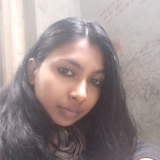Hippies still live in the lanes of Kolkata
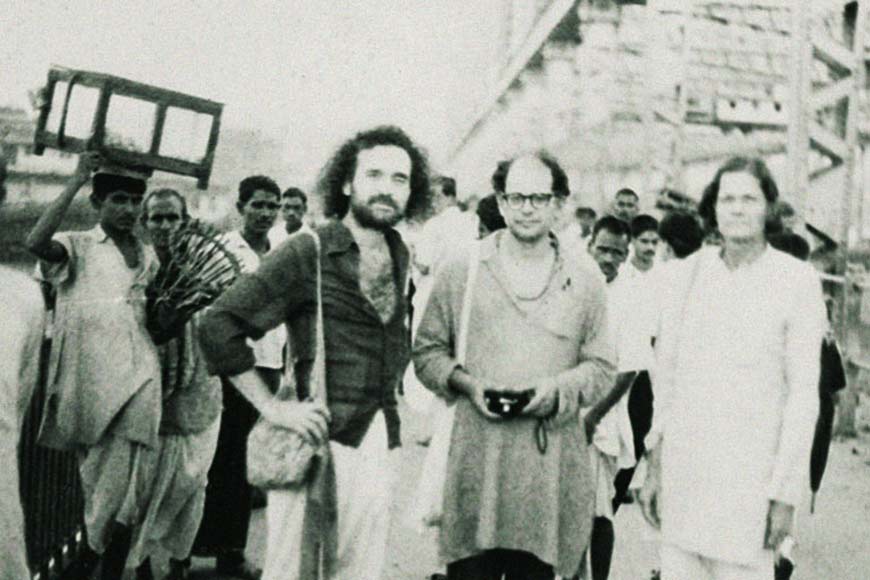
“I saw the best minds of my generation destroyed by madness…”
Poet Allen Ginsberg first read out these lines from his poem ‘Howl’ at a reading at the Six Gallery in December 1955. The reading was an immediate success and nearly 65 years on, the lines still resonate and the influence of Ginsberg, then 29, still continues on literature, social movements, popular culture and politics. Although the Right Wingers across the globe staunchly believe and try to set the seal on the fact that 50 years after ‘The Summer of Love’, Hippie counterculture is relegated to kitsch. The hippies, the Beats are the unfortunate 'humanists' in Jean-Paul Sartre's ‘Nausea’, who have lost their relevance today. “That poor humanist whom men don’t want any more…now he has entered into solitude—forever. Everything has collapsed at once, his dreams of culture, his dreams of an understanding with mankind.”
The period leading up to the 1950s was considered as the Era of Conformity. At this time the majority of Americans were living in suburban areas called Levittowns, felt threatened by Communism and were driven with conspicuous consumption. Men would go to work all dressing up in a gray or blue flannel suit while women stayed home to cook, clean, and tend the children. For Americans at that time eating a family dinner and watching TV every night was considered a conservative tradition. However, all this changed during post-World War II. People were tired of the routine and they felt "beaten" down by the traditional life style.
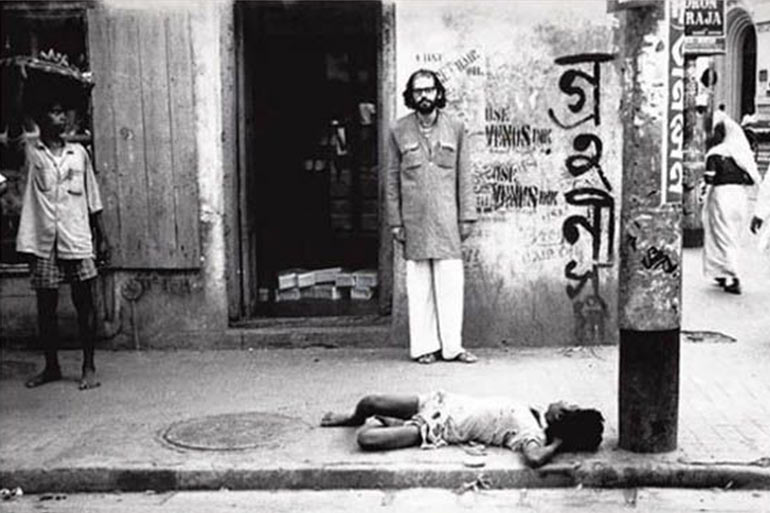 Poet Allen Ginsberg-Footpath of Kolkata
Poet Allen Ginsberg-Footpath of Kolkata
It was in 1948 that Jack Kerouac and John Clellon Holmes stated that the period after the Second World War should be called the Beat Generation. The Beat movement was America's first major Cold War literary movement. Originally a small circle of unpublished friends, it later became one of the most significant sources of contemporary counterculture, and the most successful free speech movement in American literature. It is at once a exclamation of poetry from the modernist pedestal of the New Critics and an attempt to infiltrate the academy itself; as closely associated with the proliferation of Eastern spirituality in America as it is with the drug culture and jazz rhythms of the street. Some of the Beat Generation beliefs included the rejection of mainstream American values, exploring alternate forms of sexuality (homosexuality), and experimentation with drugs. The Beat Generation was meant to echo the Lost Generation in the 1920s but it made a bigger impact. The Beat movement is often identified by its three highest-profile writers: Jack Kerouac, Allen Ginsberg, and William Burroughs—three friends who met in New York City in the mid-1940s. People started paying attention to Beat literature following the publishing of Ginsberg' book, "Howl", Burrough’s "Naked Lunch", and Kerouac's "On the Road." However, the nucleus always included numerous influences and fellow writers, whose lives form the plot through which the Beat movement travels.
For a majority of the time those associated with the Beat Generation were viewed as rebels without. Those involved were willing to print or publish anything that society did not view appropriate. In 1958 Herb Caen, a journalist from the ‘San Fransico Chronicle’ coined the term “Beatniks” as a reference to the Russian “Sputniks” because the Beat Generation was considered a threat to American Society.
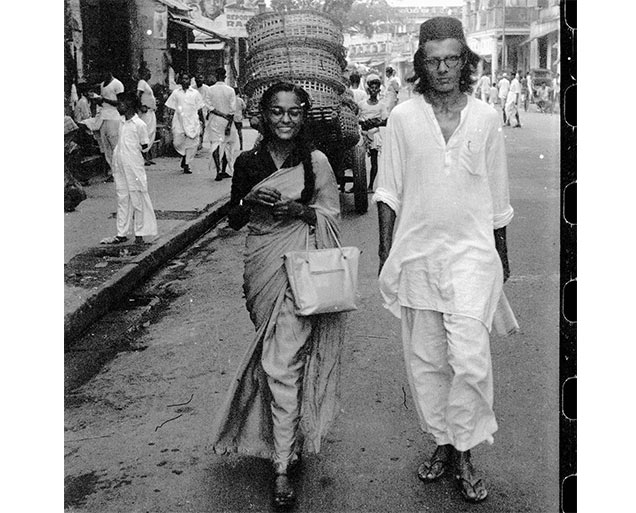 Peter Orlovsky
Peter Orlovsky
The Beat Generation impacted America and later the rest of the world significantly. It was because of the Beat Generation that people began to question the society they lived in and stepped out of it. The Beat Generation also set precedent for many important things such as the hippies and anti-war movement. Their beliefs influenced an entire generation of musicians including stalwarts like Bob Dylan, David Bowie, Lana Del Rey and bands like The Beatles, The Doors and Nirvana. They made the masses aware and helped battle racism in American society. Musicians like Dizze Gillespie and Charlie Parker were inspired to play Jazz music without the worries of racial barriers. The bohemian artist communities raised their voices against the astounding pace of mechanization that displaced artisans and skilled workers. The new era of machines were mimicking life in ways only imagined before, and making their presence felt in the home and in the workplace, altering forever how we work and live.
The Vietnam War (1959-1975) was a major issue that the hippies vehemently opposed. The Beats and their advocates found the joylessness and purposelessness of modern society sufficient justification for both withdrawal and protest. Beat poets sought to transform poetry into an expression of genuine lived experience. However, what people call the Summer of Love only lasted for about 10 months in all. Most accounts date its start from January 14, 1967, when 20,000 or 30,000 hippies assembled in San Francisco's Golden Gate Park for the first “Human Be-In." The Grateful Dead and Jefferson Airplane performed, Allen Ginsberg chanted a Hindu mantra and Timothy Leary issued the movement's marching orders: "Turn on, tune in, drop out."
Also read : Cliff Richard was once a resident of Howrah
For a while that spring, it seemed as if love really could conquer all, with a chemical assist. The Haight-Ashbury district teemed with spiritual seekers and acid-heads, Berkeley radicals and old North Beach beatniks. They were trailed by journalists from Harry Reasoner to Hunter S. Thompson, dispatched by the media to explain to Middle America what was going on. Ginsberg’s answer to the Vietnam War was using ‘flower power’ to win over the people of the world. This had tremendous effect globally.
The hippies wafted on a cloud of communal sweetness and bonded over drugs and music. And they cemented their fellowship with blissed-out superlatives like "far out," "out of sight" and the ubiquitous "groovy." However, by midsummer it was falling apart. Grass and acid had yielded to heroin and speed, and the Haight was overrun with street people, predators and runaways. Most of the bands and the original hippies decamped for more pastoral settings.
Finally on October 6, 1967, a group of counterculture purists called the Diggers held a mock funeral carrying a coffin labeled "Hippie, Son of Media," and brought the Summer of Love to an unofficial end. But the fire of rebellion could not be extinguished. Beat's literary movement, fierce criticism of the belligerent US administration, support for Cuba, homosexuality, and opposition to the Vietnam War were all there. When Ginsberg’s seminal book of poems titled ‘Howl’ was confiscated by the US police, he decided to move to India. However, he did not have adequate funds for his travel. Keith Richards of the popular British rock band, Rolling Stones funded his trip. The Beat Generation had tremendous impact globally and inspired the formation of Angry Generation in Britain, Sakshar Voice Group in Dhaka, Hungry Movement in India and Calcutta in the 1960s. However, each movement had its individual identity and addressed separate issues.
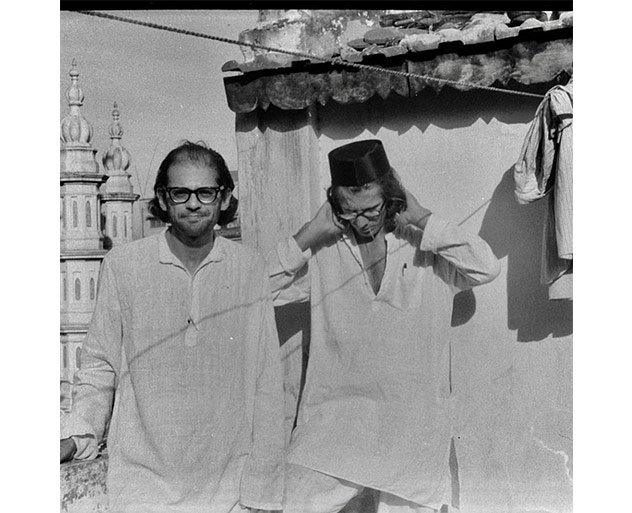 Allen Ginsberg and Peter Orlovsky- Amjadia Hotel
Allen Ginsberg and Peter Orlovsky- Amjadia Hotel
Arriving in India on February 15, 1962, Ginsberg and his writer friends Peter Orlovsky and John Giorno stayed till May 1963. They spent nearly seven months in Calcutta and six months in Varanasi, visiting many places around. In Calcutta they checked in at Amjadia Hotel in Chandnii Chowk, a crowded business locality in central Kolkata. Later, they stayed at Kobita Bhavan, Buddhadeb Basu's house, and then at poets Malay Roychowdhury- Samir Roychowdhury's house 'Chaibasa' in Patna. They made friends and bonded will with the young poets of the underground scene, in particular with the Hungry Movement poets, Malay Roy Choudhury, Shakti Chattopadhyay and the rest.
The Beats proved substantial in providing their support at the time of the Calcutta trials against the Hungryalists (1964-1967). The Hungryalists became part of the international counterculture of the time. By the end of the 1960s India herself became part of the international counterculture in the West. The Beats and afterwards the Hippies popularized their view of Indian spirituality. The single-most sensational event that gave birth to an ‘Indian fashion’ in the West was the Beatles’ journey to Rishikesh in February/March 1968. The Indian Journey became a must for so many young people who dreamed of India as a ‘Wonderland’. The hippies believed Gautam Buddha was “one of the original hippies…Jesus was the first hippie you know…”
The social origins of the hippie revolt and the young student revolt in America are much the same. However, at that time two distinct streams of ‘Youth Revolt’ were formed all over the world which are still evident in the society. ‘Student Rebellion’ is one aspect of the emergence of student power which is a positive facet, the other is the self-seeking movement of the hippie-Beatnik, which can be termed as the 'rebellion against life' where the hippies negated everything in society and broke all set rules. They propagated a world order that would be based on the principles of humanity, free-thinking, love, courage and freedom.
Jack Kerouac, who was the "Prince" of the Beatniks, asked in one of his writings (Visions of Gerard and Tristessa, 1964): "Why do people have to suffer so much?" Why do we throw hot iron rods at the broad foreheads of people who are exposed to hope? 'In reply he said to a character, “Gerard, you are a boy, so you still do not know — life is a jungle, where people eat people… There is no explaining your way out of the evil of existence. ‘in any case, eat or be eaten' — we eat now, later on the worms eat us.
Although not as visible as it once was, the Beatnik culture never died completely Blazing in the hearts of the hoi polloi in our country, in our city… in Kolkata, the Beatniks continue to teach the values of peace, love and community to the masses who have lost their way in the ‘sands of time.’
Translated by Shuvra Dey







